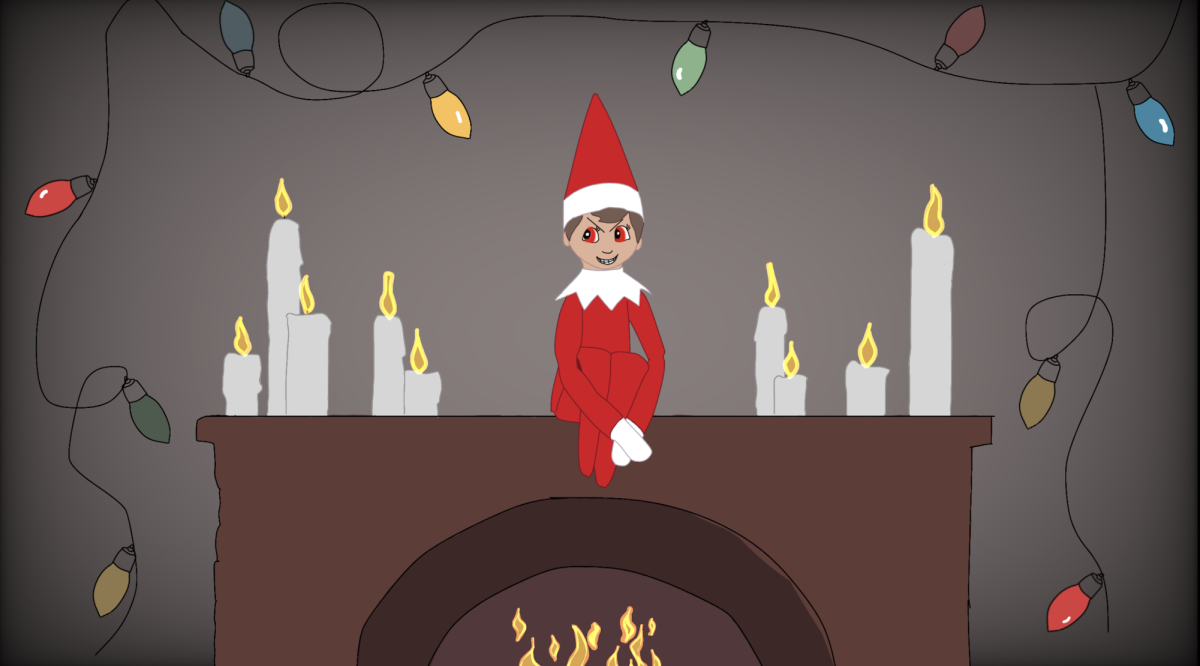Telling kids that they are constantly under surveillance and cannot escape the creepy gaze of a home intruder is usually the script of a poorly written 90s horror movie.
Well, guess what happens every Christmas? Millions of parents craft an elaborate tale of an Elf on the Shelf watching their children’s every move and reporting it to ‘Santa Claus.’ Yet, this horror story is wrapped in the guise of a sweet Christmas tale and topped off with a charming bow.
The origin of Elf on the Shelf is rooted in a Christmas children’s book titled The Elf on the Shelf: A Christmas Tradition, written by Carol V. Aebersold and Bell Chanda, where the elf would report back to Santa any good and bad behavior that occurred in children. The classic has evolved into the popular holiday tradition where parents change the location of an Elf on the Shelf each day to ensure good behavior from children.
The Elf on the Shelf can be troubling since it normalizes a level of near-constant surveillance of young kids, according to the New York Times. This coincides with other Christmas traditions that paint Santa Claus as all-knowing regarding a child’s behavior, such as the popular song “Santa Claus Is Comin’ to Town” written by J. Fred Coots and Haven Gillespie, which features the lyrics “He sees you when you’re sleeping, He knows when you’re awake. He knows if you’ve been bad or good, So be good for goodness sake!”
Children who are fed this narrative regarding Santa’s omnipotence are often unable to discern the difference between what is real and what is fake, according to sophomore Tristan Kim, who had experience with Elf on the Shelf growing up.
“As a kid, I used to go to my friend’s house a lot who had the one and only Elf on the Shelf, which was absolutely horrifying,” Kim said. “Because as a kid, you’re not self-conscious enough to realize that all those things are fake and made up, so you believe what you’re told. And when they tell you that that’s a magical being to watch you do everything, it’s really creepy.”
Instead of completely following the traditional Elf on the Shelf book, where the elf reports to Santa bad behavior, parents should instead invite the Kindness Elf into their home to add a fun twist to holiday cheer. Similar to Elf on the Shelf, parents can hide the elf around the house each day, and when children find it, the elf delivers an act of kindness to be performed through a letter. This differs from the elf’s original purpose of reporting back to Santa any good and bad behavior that occurred, with acts of kindness ranging from as simple as complimenting somebody to more complex, such as donating old clothing.
Some may argue that the Elf on the Shelf provides a fun way for kids to interact with Santa while keeping them on their best behavior. For many families, this tradition heightens holiday excitement and allows parents to play a fun game with their children.
Although Elf on the Shelf has interactive aspects that make it enjoyable, the idea of children being constantly surveilled should be re-evaluated. Alternatively, Kindness Elf encourages good behavior through positive reinforcement by directing children to do kind acts. As a result, children can learn the value of kindness through a tradition that is no longer based on an elf reporting a child’s good and bad behavior. For dance teacher and parent Samantha Gardner, the Elf on the Shelf’s purpose focuses less on good behavior and more on developing a positive mindset.
“When we first introduced the elf he had a letter that basically said ‘I’m here to see all of the ways that you’re spreading love and kindness this holiday season,’” Gardner said. “Nowadays, I think modern parents are questioning a lot of these traditions like Elf on the Shelf and Santa and there’s a lot of people that are opting out of those things. And it’s definitely something that I think about and hope that I’m doing the right thing with raising my children, but I have found it to be really joyful, playful, light-hearted and carefree.”
Instead of focusing on a tradition that is based on constantly observing children’s good and bad behavior, the holidays should be celebrated through kindness. Parents should pivot from the Elf on the Shelf to other activities that promote positivity, such as the Kindness Elf, to create a healthier holiday atmosphere for children.






